This paper honours a group of people whose efforts have kept the life story of L.M. Montgomery available for fans and scholars to study and experience. Many of their accomplishments occurred in the years preceding the publication of Montgomery’s journals in the mid-1980s.
In 2008, admirers of author L.M. Montgomery celebrated the centennial of the first publication of Anne of Green Gables with the L.M. Montgomery Institute (University of Prince Edward Island) at its 8th Biennial Conference, L.M. Montgomery, Anne of Green Gables, and the Idea of “Classic.” The Institute (LMMI) was founded in April 1993 by Montgomery scholar and Professor Emerita of English Dr. Elizabeth Epperly, who joined the UPEI faculty in 1992 and served as the first woman president of the university starting in 1995. In June 1994, Epperly initiated the first LMMI International Symposium, L.M. Montgomery and Her Works, serving as its chair. There were eleven speakers who presented their papers in the lecture theatre of the Veterinary College on campus. Since then, the international symposium became a biennial conference, and conferences have explored a variety of themes with reference to Montgomery, such as “Canadian Culture” (1996), “Popular Culture” (2000), “Life Writing” (2002), “Interior and Exterior Landscapes” (2004), “Storm and Dissonance” (2006), “Matter of Nature” (2010), and “War” (2014). The most recent conference in 2024, on “The Politics of Home,” was both in-person and online and featured over sixty speakers from sixteen countries (“Past Conferences”).
As I prepared for the 2008 “Classic” conference, I was constantly thinking about all the wonderful people who were keeping the author’s life fresh and relevant on her beloved Island and at her Ontario homes—people who helped me learn more about Montgomery, either directly or from the work they started. I volunteered to do a presentation about some of them for the opening of the conference. I began to assemble material to honour these early legacy pioneers, whose lifetimes overlapped, if briefly, with Montgomery’s—those who established places, traditions, donations, and/or projects to conserve Montgomery’s legacy and history. These are the people who took the time and energy and tapped resources to keep her life, places, and work in the public eye and scholarly sphere, mostly before her journals were made public in the mid-1980s. So that their names and contributions would not be forgotten, I wanted to acquaint present-day scholars and fans with these “Friends of the Author,” those who published early works near the time of the centennial of Montgomery’s birth (or, as it might have been named in a more digital age, #Maud100) and those who developed other projects that were not necessarily academic.
In consultation with Elizabeth Epperly, I made a list and solicited information and contributions about them from their families and from Epperly, Carolyn Strom Collins, Jack Hutton, and Yuka Kajihara. The conference opened on 24 June 2008 at the Delta Hotel in Charlottetown. After video greetings from Her Imperial Highness Princess Takamado of Japan and Jennifer Litster in Scotland, Carolyn and I read the tributes honouring a group of legacy pioneers before an audience of their family members and conference attendees and then concluded with a short video dedicated to the honourees.
To all the honourees we mentioned, we wanted them and their loved ones to know that our experience of L.M. Montgomery would not be the same without them. What follows are some updated and slightly revised notes from the tributes that Carolyn and I read in 2008.
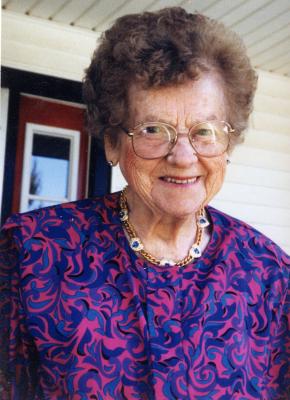
Leta Rachel McCoubrey Andrew (1901–1993) was baptized by Rev. Ewen Macdonald on 16 March 1905. When she was a child, Leta attended services with the author in the Cavendish church; after Anne of Green Gables was published, tourists would ask Leta, while she was walking to school, where to find Montgomery’s home. The Cavendish of her childhood was open and beautiful, and when she grew up, she promoted Montgomery’s presence in her beloved home in several ways.
Leta was active in the Island tourist industry beginning in the 1940s. She bought and operated the Lake of Shining Waters Tea Room (now the Shining Waters Country Inn), also known as the “Rachel Lynde House,” on the Cavendish Beach Road, to accommodate the growing numbers of visitors who wanted to be close to the author of Anne of Green Gables. Leta led the campaign to put a memorial arch identifying the “Resting Place of L.M. Montgomery” in the Cavendish Cemetery and placed signs to help tourists locate the author’s grave. She was responsible for the memorial window in the Cavendish United Church, marking Montgomery’s one-hundredth birthday, and initiated an “L.M. Montgomery Ecumenical Memorial Service” at the Cavendish United Church in the author’s honour.
Leta established the Cavendish Tourist Association’s creative writing award, which was then called “Adventure in Avonlea,” to honour new writers. She received many awards for her hard work and volunteerism and was named “woman of the year for PEI” by the Women’s Institute in 1984. Her entry in the 1986 edition of Who’s Who on Prince Edward Island reveals that she “[w]as partly responsible for the capture of bank robbers. Enjoys roast beef and Yorkshire pudding, scraped turnip, Irish music, [and] staying up late” (Ross). She was a great friend to many tourists who returned year after year to her guest home at her farm property in New Glasgow and who sent her cards and letters from all over the world.
Dr. Francis William Pius Bolger, “Father B” (1925–2017), was a member of the Order of Canada, a Professor Emeritus of History, “a legend in the classroom” (MacDonald), and an author whose expertise on the history of Prince Edward Island fostered his deep appreciation of Montgomery. He helped to change the course of Montgomery studies with his scholarship.
Bolger encouraged “Islanders to write their family stories, open their archives to the wider community, and encourage local histories” (McMillan). As a result, he guided Montgomery letters written to her friend and cousin Penzie MacNeill, into the University of Prince Edward Island’s Robertson Library and used them for his trailblazing book, The Years Before “Anne”: The Early Career of Lucy Maud Montgomery, Author of Anne of Green Gables, published in 1974. In 1980 he co-edited, with Epperly, a partial collection of Montgomery’s letters to her Scottish pen pal, My Dear Mr. M: Letters to G.B. MacMillan.
He took an active hand in preserving the Montgomery world for others as Chair of L.M. Montgomery Foundation Board and of the Lucy Maud Montgomery Birthplace Trust and as the PEI representative on Historic Sites and Monuments Board of Canada. Bolger supported the formation of the L.M. Montgomery Institute and participated in its first conference in 1994.
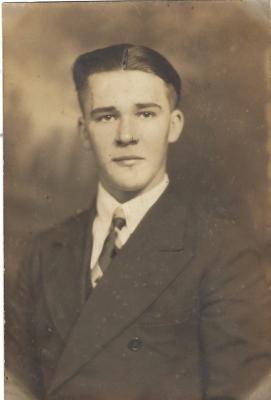
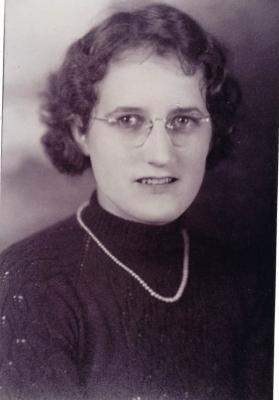
James and Ruth Campbell kept Montgomery’s second home at her Campbell cousins’ farm in Park Corner in family hands, preserving the landscape for present generations. Jim Campell (1912–1969) had tremendous respect for his cousin Maud. We are grateful that his vision and pride in his home resulted in the foresight to preserve family papers and memorabilia in a family-farm museum, which still draws people from around the world.
Ruth Campbell (1916–2010), a creative, kind, and hard-working teacher, was raised in the Montgomery family home in Malpeque, bringing to her marriage with James further connections with the author. Her grandmother was Maud’s Aunt Emily Macneill Montgomery, and Ruth was the last of her family to live at Fox Point in Malpeque (“New Moon” in the Emily books). She married Jim Campbell a few months after Montgomery’s death in 1942. Jim was trained as banker and had the skills to be a politician or writer but was persuaded to run the farm instead. Before Jim’s unexpected death in 1969, he and Ruth opened their home to visitors who wanted to know more about Montgomery. Ruth got up at dawn to clean, fill lamps, bring in wood, feed pets, and bring in flowers to get ready for guests. The house is filled with Montgomery and Macneill personal belongings and keepsakes such as quilts, Maud’s bookcase, books, lap desk (a gift from cousin Stella Campbell), letters, scrapbooks, dishes from Aunt Emily, and the parlour organ, which was played at Montgomery’s wedding at the house in 1911. The family home, now “Anne of Green Gables Museum,” remains open to visitors under the supervision of Jim and Ruth’s children, Pam and George Campbell.
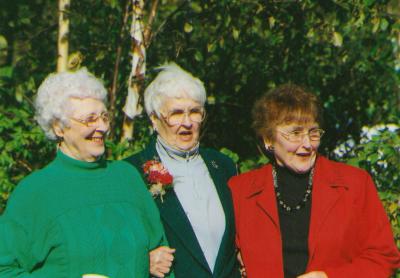
Jim Campbell’s three sisters, Amy, Maud, and Georgie, also grew up on the Campbell farm known as “Silver Bush,” as it was named in Montgomery’s Pat books. They charmed tourists for years with their family stories and were primary sources for interviews and Montgomery research.
Amy (1910–2001), the second-oldest child of George and Ella Campbell, was a valuable resource for Montgomery scholars because she was the one who remembered, very clearly, the author’s Uncle John and Aunt Annie and cousins Stella and Frederica Campbell. Amy was revered as a walking encyclopedia of family lore. As a child, she sometimes found herself an unwilling partner in mischief alongside Maud’s son Chester Macdonald. She was often instructed to accompany Aunt Maud to the beach and to hold a parasol for sunshade while the author wrote. Amy was sixteen before she realized that Maud was her cousin and not her aunt; she didn’t realize then that “Aunt Maud” was famous, and she probably never realized that she and her sisters, with a direct link to Maud, would become famous among Montgomery fans, too.
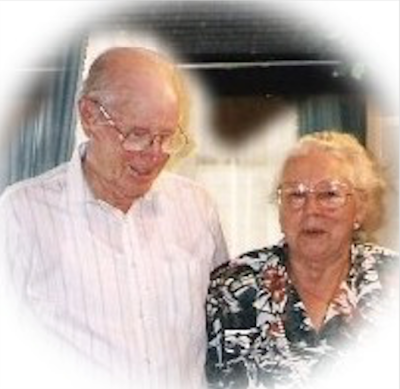
Harold and Wilda Clark lived in the Uxbridge and Leaskdale area of Ontario for over eighty years. The Clark family farm was between the two towns, and Harold (1911–2001) went to the country school with Montgomery’s sons. Wilda (1913–2000) never met the Macdonald family, but, as a teacher in the 1930s, she read Anne of Green Gables to her students and loved the author and her work. In the 1990s, Wilda opened her home to visitors researching Montgomery, including Drs. Mary Rubio and Elizabeth Waterston, and shared her collection of Montgomery keepsakes. During my visit with the Clarks, Wilda also arranged a meeting and meal with one of Montgomery’s household maids, Elsie Bushby Davidson (1904–2003), a neighbour and friend. Visitors could expect a one- or two-day excursion to visit local Montgomery sites with Wilda, which always included a stop at the Foster Memorial Cemetery to place fresh flowers at the grave of Montgomery’s infant son, Hugh (1914).
Wilda carried on the cause of Margaret Leask as an activist to commemorate Montgomery’s life in Leaskdale. Tenacious like a terrier, she lobbied the Ontario government, pointing out to a series of government bureaucrats that eleven of Montgomery’s books were written during the fifteen years that Maud lived in the Presbyterian Manse at Leaskdale. Wilda spent years trying to preserve the Manse and have it renovated into a museum about Montgomery. She rallied support to convince the Monuments Board of Canada that Montgomery’s historic site designation at Green Gables on Prince Edward Island honoured her fiction, specifically Anne of Green Gables, and that Ontario deserved a site to honour the author. Wilda and the Leaskdale Manse Steering Committee worked with the mayor, and in 1992, it was purchased by the Township of Uxbridge. The federal government recognized the manse as a heritage site in 1997. Today, the Leaskdale Manse National Historic Site and Historic Leaskdale Church where Rev. Ewen Macdonald presided are open under the ownership of the Lucy Maud Montgomery Society of Ontario.
Mollie Gillen (1908–2009) was an award-winning author and inductee into the Order of Australia. Mollie first came to Canada in the 1940s as a war bride, and in the 1950s, she began writing articles for a Canadian magazine, Chatelaine, where she later became an associate editor and staff writer. In 1973, Mollie was given an assignment to write an article about Montgomery for the centennial celebration of the author’s birth. Mollie said, “If [I hadn’t been asked] to write about Maud, I wouldn’t have had a chance to read her books nor write about her at all” (Kajihara).
This assignment led Mollie to intensive research on Montgomery. She read all of her published works and interviewed many of her friends and relatives who were alive at the time and then located the letters Montgomery wrote to one of her long-term correspondents, George Boyd MacMillan in Scotland. The existence of these letters was unknown at the time. She enlarged her research into a book and published the Montgomery biography The Wheel of Things in 1975. Mollie was most proud that she was able to recover the letters, saving these literary treasures from destruction and placing them in the National Archives of Canada. Readers sent her cards of appreciation on her one-hundredth birthday in 2008. The positive response of her fans filled her with amazement and joy.
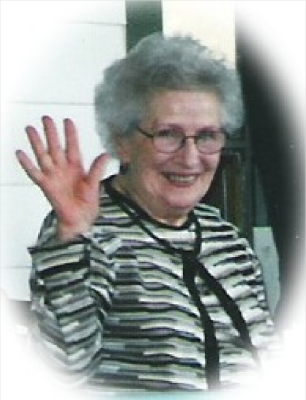
Ruth Steele Macdonald (1915–2017) was known for her unfailing generosity with family materials and active encouragement of Montgomery studies; she was instrumental from the beginning in supporting Montgomery scholarship and research. She was a most generous interviewee about her husband, Dr. Stuart Macdonald (1915–1982), Montgomery’s youngest son, sharing his lifetime of stories about his mother and the life of the mind and spirit she encouraged.
Ruth was the first Montgomery family member to be contacted about starting the L.M. Montgomery Institute—and the first to say she was coming to the launch party for it. She was delighted to support her family in making key, invaluable donations to the Institute, including Montgomery’s watch, the Macneill family Bible with Montgomery’s annotations, and Stuart’s numerous signed first editions. She personally donated Montgomery’s Japanese kimono.
Ruth’s quiet, indomitable, magnanimous presence could be felt in almost every successful collaboration: between the heirs and scholars, the heirs and governments, the heirs and creative artists. The sweet smile on her face in her wedding photograph with Stuart was the very same in 2008 in its warmth and radiant kindness. Ruth Macdonald, in other words, through force of character and strength of spirit urged the best wherever she was involved on the family’s behalf.
Jennie (b. 1929) and John Macneill (1930–2017) lived on the farm and land owned by John’s ancestors and Montgomery’s maternal family in Cavendish, PEI. Jennie, a former teacher, wrote: “Every day of our life, we look out on the hill fields. Those are the hills she looked on” (Gallant). Even as a child Jennie was such a fan of the author and her books that she attended Montgomery’s funeral in Cavendish in 1942.
After Montgomery became famous, tourists began to overrun the empty house where the author grew up. John’s grandfather took down the old Macneill farmhouse in the 1920s but kept the kitchen section for a shed. After John and Jennie read the first volume of Montgomery’s journals, they began to reclaim the spot where the home once stood, clearing away the overgrown site. With their own hands, the Macneills lifted fallen stones back into place in the old cellar of the home where Montgomery wrote Anne of Green Gables. They dug out the original well and built a well-stocked bookstore (complete with Macneill artifacts) on the site of the old barn. In it we can see the post-office desk and stamp, the mantle and clock, and the sewing machine. Beside it sits the original kitchen wing of the family house where the author began to write the first lines of Anne of Green Gables. Jennie wrote many articles about Cavendish, was a member of the Avonlea (Cavendish) Women’s Institute (est. 1920), and was a popular speaker for many Island Lecture Series. As chair of the L.M. Montgomery Heritage Society, she initiated the first celebration of Montgomery’s birthday in November 1995. The Site of L.M. Montgomery’s Cavendish Home, the “birthplace of Anne of Green Gables,” renewed by John and Jennie as a labour of love, is now designated as a National Heritage Site.
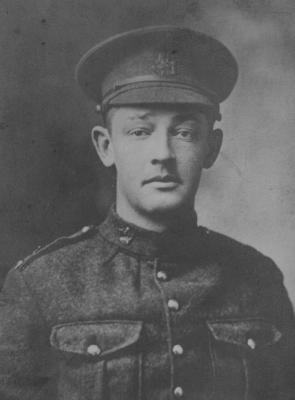
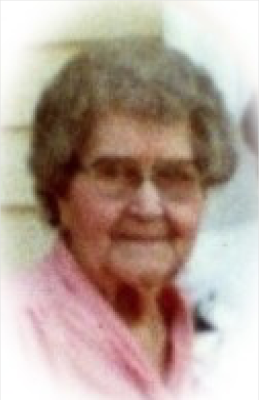
Heath and Mary Ella Montgomery lived in the Park Corner home built by Maud’s grandfather, Senator Donald Montgomery (1808–1893). The house has views of both the Gulf of St. Lawrence and Campbell’s Pond, Montgomery’s “Lake of Shining Waters.” Heath (1893–1962) and Mary Ella (1902–1996) lived across the road from Silver Bush, the home of Montgomery’s Campbell relatives. The Montgomerys maintained the legendary hospitality they were always known for, opening their home in Park Corner to many visitors through the years. James Townsend Montgomery (1850–1903) and Eliza Montgomery (1854–1944) took over the home and farm after the Senator died and kept the furnishings with the house, including many items Maud wrote about in her books, such as the rosebud tea set, Magog the china dog, the china fruit basket, and the Townsend clock. The house is considered a model for “Ingleside” in the Anne books.
James and Eliza’s son Heath was Maud’s first cousin. He served in the First World War in France, returning to the farm in Park Corner after the war ended. He and Mary Ella had five children, some of whom remember Maud visiting the home when she came out to Park Corner. Heath had one of the few automobiles in the area at the time and motored Maud around the Island to see friends. After Heath’s death, Mary Ella welcomed guests into her home, then named “Montgomery Tourist Home.” George Campbell remembers Mary Ella’s many wonderful stories about Maud. In a conversation I had with him in 2008, he recalled what a great cook Mary Ella was and how hard she worked and that she hosted many tourists at her bed and breakfast. “She was a strong and kind-hearted woman. She had a keen business sense, and it seemed nothing slowed her down.”
In 1993 Heath and Mary Ella’s son Robert opened the house as a museum, Montgomery Manor, later renamed as the Lucy Maud Montgomery Heritage Museum. In 2008, about seventy pieces from the Montgomery collection of memorabilia were sent to Japan and formed the nucleus of their display celebrating the hundredth anniversary of Anne of Green Gables. Thousands of people came to view the artifacts made famous in the author’s books. The Montgomery house was sold to private owners in 2015.
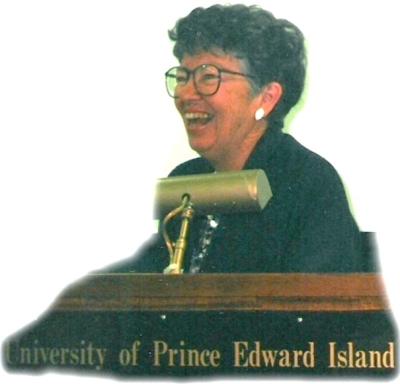
Dr. Elizabeth Hillman Waterston (1922–2024), member of the Order of Canada, Fellow of the Royal Society, Professor Emerita of University of Guelph, was the ebullient and energizing force behind modern Montgomery scholarship. A distinguished scholar and expert in Scottish-Canadian literature, she collaborated with colleague Mary Rubio to co-edit The Selected (and later Complete) Journals of L.M. Montgomery and to create the journal Canadian Children's Literature/Littérature canadienne pour la jeunesse. Waterston’s chapter on Montgomery for the 1967 book Clear Spirit: Twenty Canadian Women and Their Times, edited by Mary Quayle Innis, was “foundational” and opened doors for Montgomery studies in academic circles. At the time, it was unusual to write about female writers or rural writers or children’s literature or anything aimed at popular audiences. It “turned out to be the opening of renewed interest in an underestimated novelist” (Waterston, “Autobiographical”).
For Clear Spirit, Waterston interviewed Stuart Macdonald, who told her that he had his mother’s journals written over her lifetime. Waterston shared that surprising news with Rubio, who followed up years later when Stuart was ready to release the journals and helped acquire the journals for the University of Guelph Special Collections. Together, Waterston and Rubio edited Montgomery’s journals, revealing more insights about the author for today’s admirers of Montgomery. Waterston’s long focus on Montgomery resulted in Magic Island: The Fictions of L.M. Montgomery, a companion book to Rubio’s landmark biography, Lucy Maud Montgomery: The Gift of Wings.
The Myrtle and Ernest Webb Family: Marion, Keith, Anita Maud, Lorraine, and Pauline (Polly) Webb have been a part of the Montgomery legacy for most of the twentieth century and into the twenty-first century. They inhabited Montgomery’s beloved fictional places in real life, and, as adults, they were companions for Maud in her last years. Myrtle MacNeill Webb (1883–1969) was Montgomery’s third cousin and lived for nearly fifty years at the MacNeill/Webb farm, not far from Maud’s home. As a young girl, Myrtle lived with her mother and great-aunt and uncle and then made it her own home with her husband and children. The Webbs were an active part of the Cavendish farming community and the last family to live and grow up on the land and in the house now known as “Green Gables.” Maud always stayed with them on her visits, and they were part of an intimate audience who listened to the author tell stories in their home and on the Cavendish beach. They were among the long-time Cavendish families that Maud considered her kin.
Myrtle and her family never expected to become farmer/tourism entrepreneurs, but Montgomery’s success as an author and the obvious identification of the Webb farm as Green Gables catapulted the Webb family into a Neverland of day-to-day labour and celebrity. Myrtle and her daughters invited tourists into their house and later into the “Green Gables Tea Room”—a practice that ultimately resulted in an expansive National Park and international destination spot. The Webb family preserved their home in its transition from an idyllic farm home to a place of fiction and finally to a national treasure.
Meanwhile, they continued the family tradition of hospitality when some family members moved to Norval, Ontario, and two of their descendants, Elaine and Kelly Crawford, shared Montgomery’s recipes, resulting in the publication of Aunt Maud’s Recipe Book. Myrtle’s daughters and grandchildren donated family heirlooms from Maud to the LMMI to be shared with her admirers: her tablecloth, the knitted apple-leaf pattern bedspread she made, a twenty-two-volume set of her novels, including a number of first editions inscribed and annotated by the author, and a lovely crystal necklace Montgomery bought at Ryrie’s in Toronto. And, finally, they shared an immense wealth of family history so that the story of Green Gables might be captured within the pages of Alan MacEachern’s Becoming Green Gables: The Diary of Myrtle Webb and Her Famous Farmhouse.
The special tribute to this early generation of Montgomery preservationists was concluded with a short video dedicated to them. It used images from early English-language print editions of Anne of Green Gables and music from “Ancestral Voices” by the College of Piping and Celtic Performing Arts of Canada.
About the Author: Mary Beth Cavert, an independent Montgomery scholar with an M.A. in Educational Administration, was a public-school teacher for thirty-four years. She specializes in the personal, historical, and literary context of Montgomery’s kinship ties. Her research has been included in The Complete Journals of L.M. Montgomery, and she has been a contributing writer in L.M. Montgomery’s Rainbow Valleys, The Intimate Life of L.M. Montgomery, and The Lucy Maud Montgomery Album. She authors and publishes The Shining Scroll and the L.M. Montgomery Literary Society social media accounts and website. She has finished editing the complete correspondence from L.M. Montgomery to George B. MacMillan, L.M. Montgomery’s Letters to Scotland, and is updating a manuscript of Montgomery’s book dedications, L.M. Montgomery’s Kindred Spirits. She is a founding member of the board of the Friends of the L.M. Montgomery Institute, a member of the editorial board of the Journal of L.M. Montgomery Studies, and a recipient of the 2020 L.M. Montgomery Institute Legacy Award.
Social Media @LMMontgomeryLS
Facebook https://www.facebook.com/LMMontgomeryLS/
Twitter https://x.com/LMMontgomeryLS
Instagram https://www.instagram.com/lmmontgomeryls/
Threads https://www.threads.net/@lmmontgomeryls
Pinterest https://www.pinterest.com/montgomeryls/
Acknowledgements: This presentation was made possible with the contributions from the families of the Montgomery legacy champions and my collaborators mentioned in the paper, and especially Carolyn Strom Collins, fellow traveller to many LMMI conferences. A multitude of thanks to the LMMI conference organizers, since 1994, for so many years of joy and celebration. Finally, deep gratitude to the editors, especially Lesley Clement, Kate Scarth, and all the staff of the Journal of L.M. Montgomery Studies for being today’s Legacy Preservationists.
Credits: The photo of Leta Andrew is used with permission from Nellie Ingleman; the photos of James Campbell, Ruth Campbell, and Maud, Amy, and Georgie Campbell are used with permission from George and Pam Campbell; the photo of Mollie Gillen is used with permission from Kevin McCabe; the photos of Heath and Mary Ella Montgomery are used with permission from Robert Montgomery; the photo of the Webb family is used with permission from Elaine Crawford. The photos of Francis W.P. Bolger, Harold and Wilda Clark, Ruth Macdonald, Jennie and John Macneill, and Elizabeth Waterston are the property of the author, Mary Beth Cavert.
Banner Image: Anne of Green Gables Museum (Silver Bush). Park Corner, PEI. Photo by Mary Beth Cavert, c. 2008.
Works Cited
Bolger, Francis W.P. The Years Before “Anne”: The Early Career of Lucy Maud Montgomery, Author of Anne of Green Gables. Prince Edward Island Heritage Foundation, 1974.
Crawford, Elaine, and Kelly Crawford. Aunt Maud’s Recipe Book: From the Kitchen of L.M. Montgomery. Moulin Publishing Limited, 1996.
Gallant, Paul. “An Interview with John and Jennie Macneill.” Kindred Spirits Magazine, Summer 1994, p. 20.
Gillen, Mollie. The Wheel of Things: A Biography of L.M. Montgomery, Author of Anne of Green Gables. Fitzhenry and Whiteside, 1975.
Innis, Mary Quayle, and Canadian Federation of University Women. The Clear Spirit: Twenty Canadian Women and Their Times. Published for the Canadian Federation of University Women by U of Toronto P, 1966.
Kajihara, Yuka. “In Celebration of Mollie Gillen’s 90th Birthday.” Yukazine/LMM in Ontario. https://cd.avonlea.hu/websites/LMM/www.yukazine.com/lmm/e/Mollie.ATC26.98.99.html.
MacDonald, Ed. “Father Francis Bolger, Iconic P.E.I. Historian, Dies at Age 92.” CBC News, 29 September 2017, Canadian Broadcasting Corporation, https://www.cbc.ca/news/canada/prince-edward-island/father-francis-bolger-died-1.4312654.
MacEachern, Alan, and Myrtle Webb. Becoming Green Gables: The Diary of Myrtle Webb and Her Famous Farmhouse. McGill-Queen’s UP, 2024.
McMillan, Charles. “Professor Charles McMillan’s Tribute to Fr. Bolger, 3 October 2017.” Diocese of Charlottetown. https://dioceseofcharlottetown.com/professor-charles-macmillians-tribute-to-fr-bolger/.
Montgomery, L.M. My Dear Mr. M: Letters to G.B. MacMillan from L.M. Montgomery. Edited by Francis W.P. Bolger and Elizabeth R. Epperly. McGraw-Hill Ryerson, 1980.
“Past Conferences.” L.M. Montgomery Institute University of Prince Edward Island, L.M. Montgomery Institute, https://lmmontgomery.ca/conferences.
Ross, Shane. “Who’s Who on P.E.I.: 33 Years Later, Is It Time for an Update?” CBC News, 26 August 2019, Canadian Broadcasting Corporation, https://www.cbc.ca/news/canada/prince-edward-island/pei-who-s-who-book-john-barrett-1.5256679.
Rubio, Mary Henley. Lucy Maud Montgomery: The Gift of Wings. Doubleday Canada, 2008.
Waterston, Elizabeth. “Autobiographical Sketch.” https://elizabethwaterston.com/biography.html.
---. Magic Island: The Fictions of L.M. Montgomery. Oxford UP, 2008.
